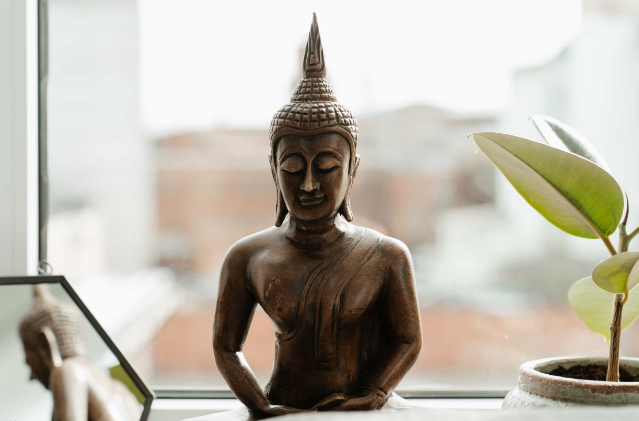Meditation Who Am I?
Learn about meditation, who I am, and how it can help a person achieve their goals.

Selfpause Affirmation App
Download the app to get 1,000’s of affirmation meditations and everything you need to write, record and listen to your own.
Meditation is a practice of training the mind to observe and be aware of the present moment. It can be achieved in several different ways. One method involves mindfulness, which involves focusing the mind on an object, activity, or thought. It can help a person achieve mental clarity and emotional calmness. It also helps a person become more focused and less distracted.
Mindfulness meditation

The eight-week program called Mindfulness-Based Stress Reduction (MBSR) is a secular mindfulness training that aims to help people reduce the impact of stress, anxiety, depression, and pain. It also offers techniques for coping with pain. Mindfulness has been shown to have therapeutic benefits for individuals suffering from pain, depression, and anxiety.
Mindfulness meditation works by keeping the mind focused on the present moment. This allows you to experience your world from a deeper level. Mindfulness meditation can be practiced in a variety of ways, so you can adjust your technique to fit your lifestyle and individual needs. For example, you can try naming your thoughts and feelings.
Mindfulness meditation is especially beneficial for children. It is important for them to learn how to cope with stress and anxiety from a young age. During the last century, the youngest generation of children had to deal with an epidemic that swept the nation. They fell behind in social and educational achievement. Mindfulness meditation helps them cope with life’s challenges and develop better attention skills, which can lead to greater academic success. These benefits may last throughout their lives.
Mindfulness meditation is an excellent way to improve your focus, reduce stress, and stimulate creativity. While it requires time and practice, it can be easily integrated into your daily life. You can meditate while you’re eating, walking, or performing other activities. It helps to choose a quiet location where you can practice in peace and tranquility.
Mindfulness meditation has many benefits for both individuals and organizations. Despite the fact that it can be intimidating, even a few minutes a day can have a profound impact on your well-being. By increasing your capacity for mindfulness, you’ll be able to better handle stressful situations and lead a more contented life. Plus, being mindful will improve your ability to connect deeply with others, which is vital to building a strong foundation for relationships.
Researchers have shown that mindfulness meditation can improve the quality of life for people suffering from pain. This practice can be taught through books, community-run meditation classes, and clinical programs.
Samatha meditation

The first step to practicing Samatha is to find a comfortable place to practice. Avoid a place where it is very cold, isolated, or noisy. A retreat can help you cultivate Samatha, but it is best to practice in an environment that is conducive to meditation. Most of the obstacles to practicing Samatha are in your mind.
During Samatha meditation, the focus is placed on your breath, your consciousness, and your thoughts. The intention is to calm your mind and release any tension or stress in your body. The first step for Samatha is to practice in a relaxed posture. In order to do this, you must first sit comfortably on the floor. In addition, you must open your hip flexors and relax your facial muscles. Next, you should take a slow, deep breath. This will stimulate the parasympathetic nervous system and reduce activity in the amygdala. This will balance your stress levels.
When you reach the sixth stage of Samatha meditation, you may be surprised at how quickly you become aware of your mind. You might have noticed that during previous stages, you had to exert a lot of effort in order to become more clear. This increased mental activity created subtle excitement. This seventh stage is a unique way of balancing your mind during these times.
You may not realize it, but Samatha meditation can change your life. It can improve your concentration and help you get rid of afflictive emotions. You will find a deeper sense of peace as a result. In addition to improving your focus and improving your ability to stay focused, this form of meditation can help you stop worrying about what others are thinking.
Samatha meditation involves examining your thoughts and emotions, allowing yourself to experience the corresponding feelings. The purpose is to bring your mind to peace, happiness, and virtue. The resulting concentration is called Samadhi. There are two types of Samadhi: the first is called Aramma-n’upanijjhana, and the second is Lakkha-n’upanijjhana.
Vipassana meditation

Vipassana meditation is a Buddhist practice that focuses on the question, “Who am I?” The term vipassan comes from the Pali Canon, and literally means “special super seeing.” In the Pali Canon, vipassan is described as one of two qualities of the mind–the other being samatha.
Vipassana is an ancient meditation practice with many benefits. This method was taught by the Buddha in Ancient India. If you are curious to learn how to do this meditation, you can watch a short video on YouTube. These videos are about twenty minutes long and are intended to give you an introduction to the practice.
The key to Vipassana is to pay attention to your breathing. It is possible to focus on the breath for hours or even days. But it is best to start small. Start by practicing Vipassana for five to ten minutes. After that, gradually increase your practice.
The ultimate goal of Vipassana meditation is to free the mind of all suffering. The practice of this technique helps remove craving, ignorance, and aversion–which are the causes of all human suffering. Over time, this practice will lead to Liberation–a permanent change of consciousness. This is the ultimate goal of Buddhist practice. Several different routes lead to Liberation, but all are beneficial to the practitioner.
After six and a half days of Vipassana meditation, students will learn to focus on their breath and the sensations in their bodies. Through observing the breath, students will develop the ability to penetrate the entire physical and mental makeup with clarity of insight. Students who complete the course will also learn to develop loving-kindness toward all beings.
Vipassana meditation will help you find peace, restore your confidence in your wholesome human qualities, and create an environment of freedom and security in your life. If you’re a beginner at Vipassana, you can practice this practice at home or through media recordings. However, this practice is not for everyone.
Another benefit of Vipassana meditation is that it has been found to help reduce the effects of addiction. According to one study, participants meditating twice a week experienced fewer episodes of drug or alcohol abuse. The study also concluded that Vipassana meditation has a positive effect on executive functioning. It also has the added benefit of being an effective stress-reduction therapy.
Mindful prayer

If you’ve wondered how to start your own mindful prayer practice, you’ve come to the right place. Mindfulness meditation helps you notice your thoughts and let them go. The key is not to judge them, as they are not necessarily true. Your thoughts do not define you, and they are not the source of your pain or happiness.
Meditation is an ancient practice. It is often used as a form of prayer, such as in Centering Prayer, which includes God the Father, God the Son, and God the Holy Spirit. While some conservative religious traditions consider mindfulness a contaminant of prayer, secular people can benefit from this practice, too.
Christians practice a form of contemplative prayer. They practice this form of prayer without effort, allowing God to take control of their minds. This method is a great way to be “still” and “know” who God is. However, they must make sure that their practice is grounded in Scripture and focuses on connecting with God.
People who suffer from complex PTSD understand how their minds are cluttered with thoughts. The healing process is challenging, but the practice of mindfulness and prayer can help to calm the mind. By filling our souls with awareness of the place, we can achieve peace and healing. In this series, we’ll explore mindfulness and prayer, their benefits, and their healing pathways. So, come along and join us in exploring these practices and learning how to make them part of your life.
Practicing mindfulness is a good way to deepen your relationship with God. While mindfulness is a great tool to reduce stress and anxiety, it doesn’t replace prayer. But it should be practiced alongside the traditional form. The goal of this practice is to find a connection with God and the power of prayer.
Our Top FAQ's
The purpose of asking “Who am I?” during meditation is to develop a deeper understanding of the self and to cultivate self-awareness. Asking this question during meditation can help to clarify the mind and encourage introspection, allowing the meditator to gain a greater understanding of their own thoughts, feelings, and beliefs.
Asking “Who am I?” during meditation is related to self-inquiry and self-discovery because it encourages the meditator to reflect on their own identity and to explore the nature of their own being. By asking this question, the meditator can gain insight into their own thoughts, emotions, and beliefs, and can learn more about themselves and their place in the world.
Some common techniques for addressing the question “Who am I?” in meditation include mindfulness meditation, self-inquiry meditation, and self-reflection. In mindfulness meditation, the meditator focuses their attention on the present moment and observes their thoughts and feelings without judgment. In self-inquiry meditation, the meditator poses the question “Who am I?” to themselves and reflects on the answers that arise. In self-reflection, the meditator spends time journaling or thinking about their own identity and the factors that make up their sense of self.
Asking “Who am I?” during meditation can potentially lead to a deeper understanding of the self. By consistently practicing self-reflection and self-inquiry, the meditator can gain greater insight into their own thoughts, emotions, and beliefs. This can help the meditator to develop a more accurate and nuanced understanding of themselves and can lead to personal growth and self-improvement.
There are a few potential pitfalls or dangers to keep in mind when practicing meditation on the question “Who am I?” One potential danger is that the meditator may become too attached to their own thoughts and beliefs, leading to a lack of objectivity and potentially hindering personal growth. Another potential danger is that the meditator may become overly focused on the question “Who am I?” and lose sight of the present moment, potentially leading to feelings of anxiety or stress. It is important for the meditator to approach this type of meditation with an open mind and to avoid becoming overly attached to any particular thoughts or beliefs.
